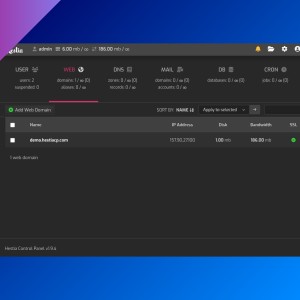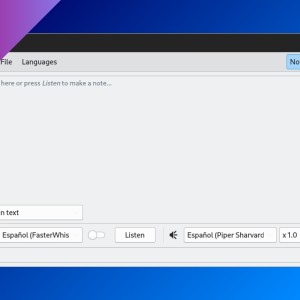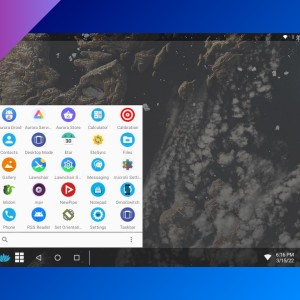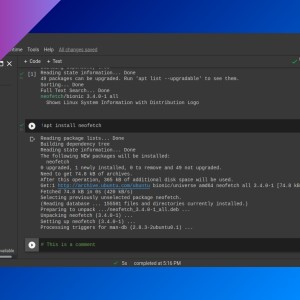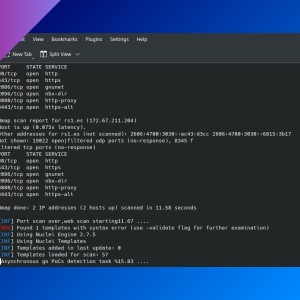Processing PDF files with a Terminal
Table of Contents
Learn how to use some commands to create and process PDF files using a Terminal.
GhostScript
With GhostScript you can make several processing tasks to a PDF file, like compressing.
Following command may seem a bit complex, but this is useful to understand how to use every parameter.
gs \
-dNOPAUSE \
-dQUIET \
-dBATCH \
-sDEVICE=pdfwrite \
-dPDFSETTINGS=/printer \
-dAutoFilterColorImages=false \
-dAutoFilterGrayImages=false \
-dDownsampleColorImages=true \
-dDownsampleGrayImages=true \
-dDownsampleMonoImages=true \
-dColorImageResolution=150 \
-dGrayImageResolution=150 \
-dMonoImageResolution=150 \
-dPrinted=false \
-sOutputFile=output.pdf \
input.pdf-dNOPAUSE -dQUIET -dBATCH: By default,gswill show every page of the PDF file and process it, one by one, with a manual confirmation between pages.-dNOPAUSEeliminates the manual confirmation and-dBATCHautomatically closegsafter the process.-dQUIEThides visual output of the process (equivalent to-q).-sDEVICE=pdfwrite: this specifies output file format. There are several options: “pdfwrite”, “ps2write”, “png16m”, “jpeg”, etc.-dPDFSETTINGS=/printer: these are predefined templates for processing a PDF. Allowed values are (from worse quality to better): “/screen”, “/ebook”, “/printer” and “/prepress” (More info). There is also a “/default” template. You can overwrite individual settings, and this is what I do with the following parameters.-dAutoFilterColorImages=false -dAutoFilterGrayImages=false: I’m not sure what kind of filtering does this parameter, but setting it to “false” makes output to weigh less.-dDownsampleColorImages=true -dDownsampleGrayImages=true -dDownsampleMonoImages=true: this allows to reduce image resolution below the current level.-dColorImageResolution=150 -dGrayImageResolution=150 -dMonoImageResolution=150: this sets image resolution in DPI (dots per inch).-dPrinted=false: if this parameter is equal to “true”, means output will be printed and therefore is not necessary to keep hyperlinks.-sOutputFile=output.pdf: in this parameter you type filename of the output.
Some examples
# Create a preview (a PDF with the first pages)
gs -dNOPAUSE -dBATCH -dQUIET -sDEVICE=pdfwrite -dFirstPage=1 -dLastPage=5 -sOutputFile=preview.pdf input.pdf# Export a single-page PDF as a JPEG image (quality: 80%)
gs -dNOPAUSE -dBATCH -q -sDEVICE=jpeg -dJPEGQ=80 -sOutputFile=image.jpg input.pdf# Compress a PDF using the 'ebook' template
gs -dNOPAUSE -dBATCH -q -sDEVICE=pdfwrite -dPDFSETTINGS=/ebook -sOutputFile=output.pdf input.pdf# Convert a color PDF to B&W
gs -dNOPAUSE -dBATCH -q -sDEVICE=pdfwrite -sColorConversionStrategy=Gray -dProcessColorModel=/DeviceGray -sOutputFile=input_bw.pdf input.pdfNote (for scripts): If you insert a GhostScript command into a variable and you get errors when using filenames with spaces, try transforming the filename to add escape characters because scripts don’t handle escape characters correctly (check Bash syntax for more info about the syntax), and use sh -c to run GhostScript (with double quotes around). For example, a file named ‘pdf-compress.sh’:
#!/bin/bash
COMMAND="gs -dNOPAUSE -dBATCH -q -sDEVICE=pdfwrite "
# INPUT and OUTPUT are filenames
INPUT=${1// /\\ }
INPUT=${2// /\\ }
COMMAND=${COMMAND}"-sOutputFilename=$OUTPUT $INPUT"
sh -c "$COMMAND"You can run the script as usual (escaping spaces with \):
pdf-compress.sh input\ with\ spaces.pdf output\ with\ spaces.pdfLibreOffice
Using LibreOffice with the command line is not very common, but it’s useful if you want to use a script to convert a text file to PDF.
# This will use default settings for PDF export
soffice --convert-to pdf --outdir /output-folder input.docxGraphicsMagick
This program allows you to convert one or several images to PDF. It’s as simple as this:
gm convert image1.png image2.png file.pdfPoppler
See Poppler: command-line PDF tools.
pdftk
This tool for manipulating PDF files can do a lot of things. pdftk syntax is simple:
pdftk <input file> <operation> output <output file> [<other parameters>]These are some of the available ‘operations’:
cat <page-range>: use it to merge, split or rotate pages.
# Remove first page
pdftk input.pdf cat 2-end output out.pdf# Select odd pages within a range
pdftk input.pdf cat 3-27odd output out.pdf# Two ranges
pdftk input.pdf cat 2-5 7-9 output out.pdf# Rotate an entire PDF 90 degrees clockwise
pdftk input.pdf cat 1-endeast output out.pdf
#Rotate the first PDF page only to 90 degrees clockwise
pdftk in.pdf cat 1east 2-end output out.pdf
# Page rotation can be north: 0, east: 90, south: 180, west: 270backgroundandstamp: add a watermark.
After adding the output filename, you can add some additional parameters to modify the file:
flatten: flatten a PDF form.user_pw PROMPT: encrypt the file with a password.
See my other pdftk posts for Encrypting PDFs, How to flatten PDF forms to avoid compatibility errors and How to add a watermark to your multimedia files.
OCRmyPDF
Tool to add an OCR layer into a PDF. Check my post: Add an OCR layer to a PDF with Tesseract and ocrmypdf.
Extra: DjVu to PDF
ddjvu allows to convert a DjVu file to PDF:
ddjvu -format=pdf test.djvu test.pdfIf you have any suggestion, feel free to contact me via social media or email.
Latest tutorials and articles:
Featured content:

